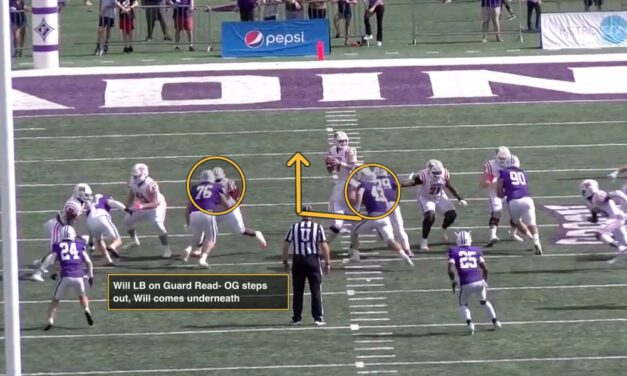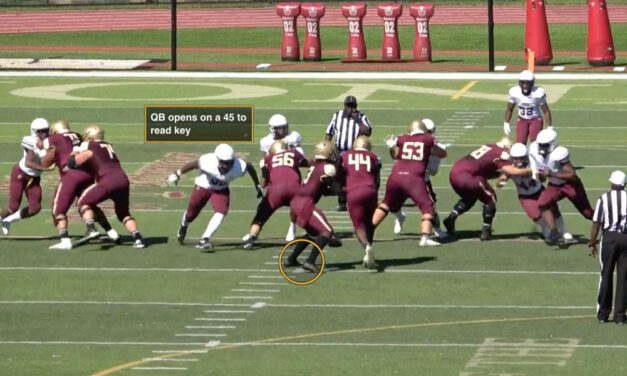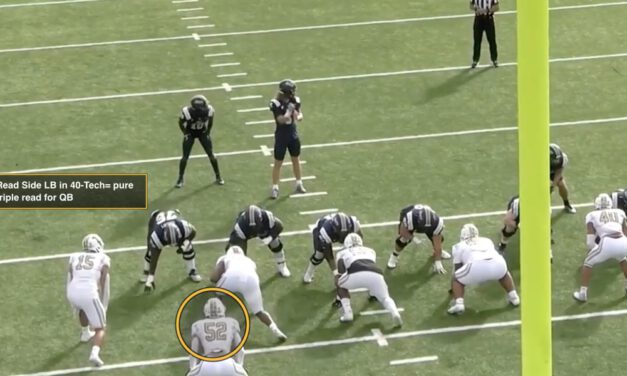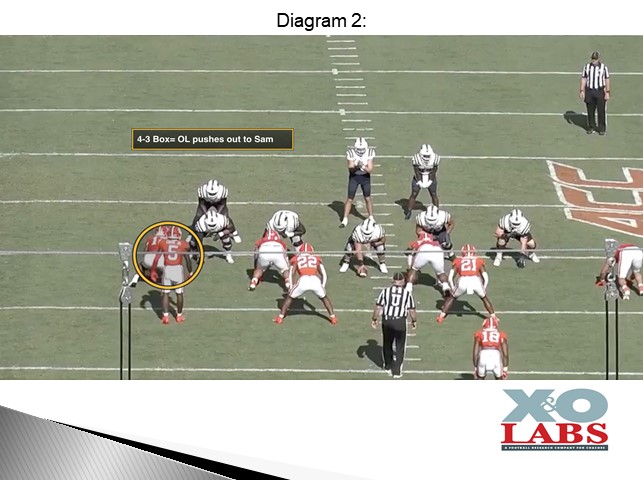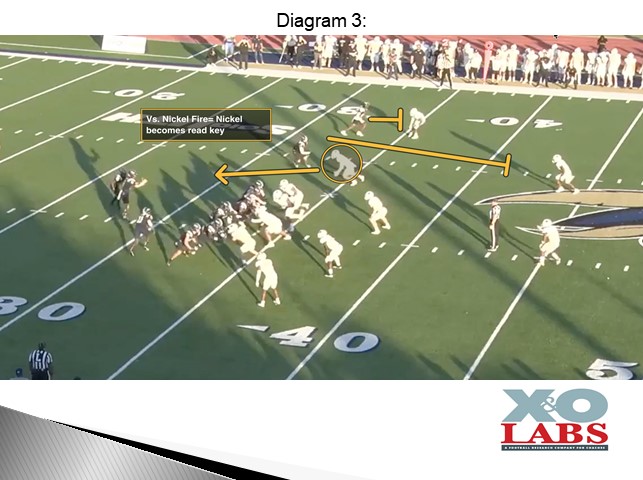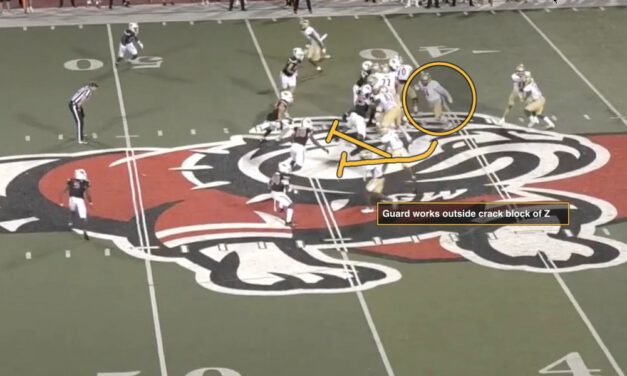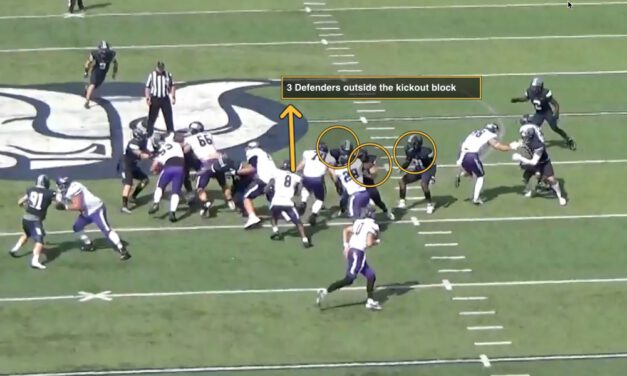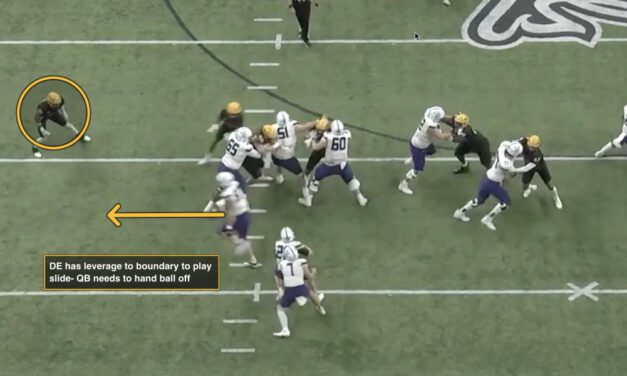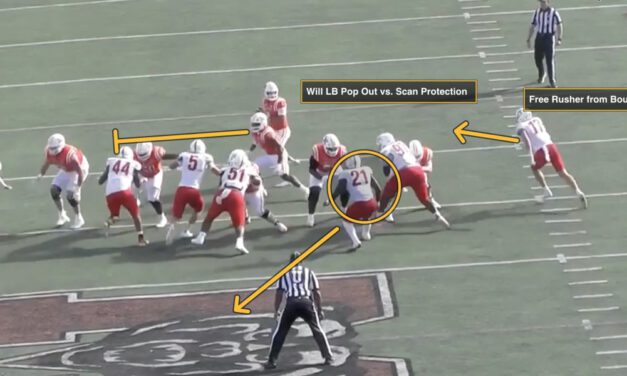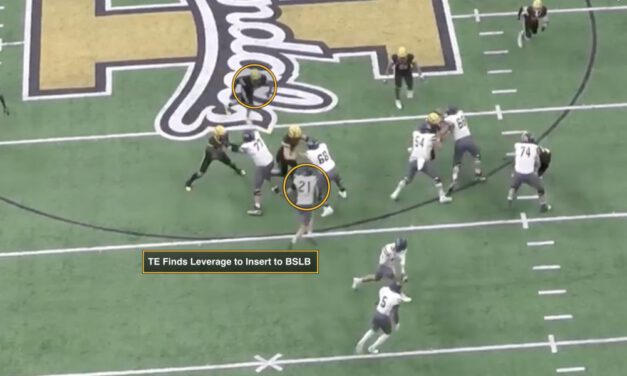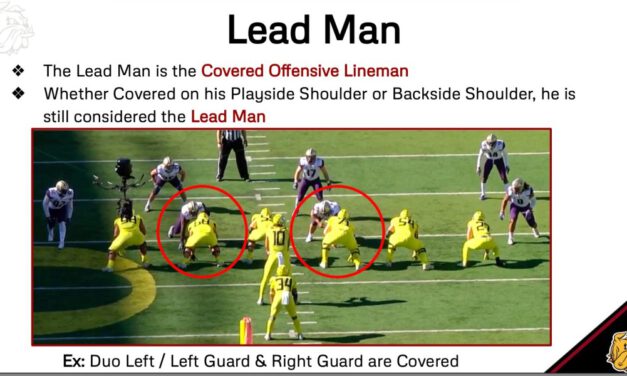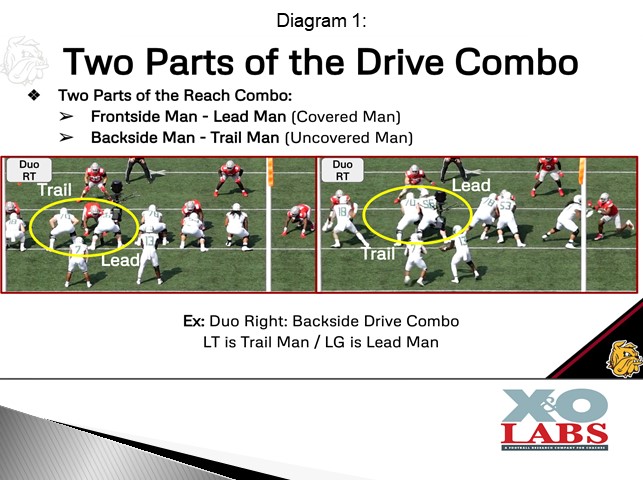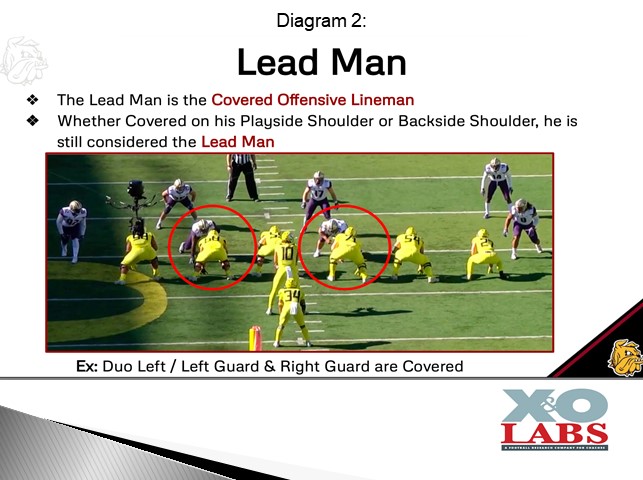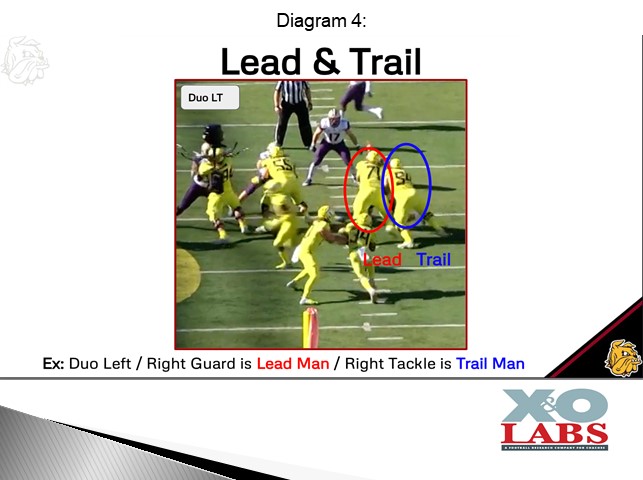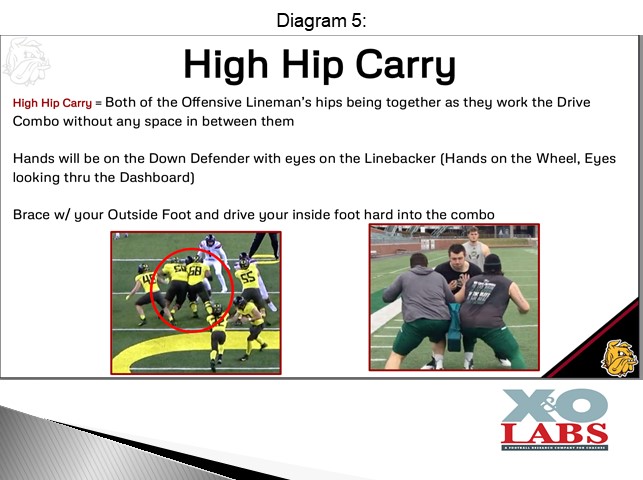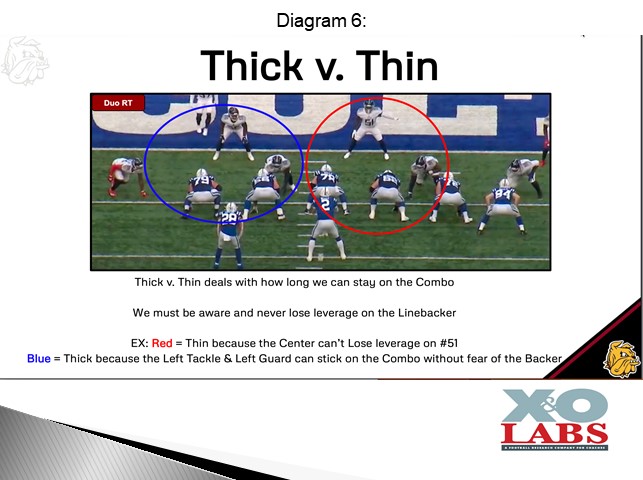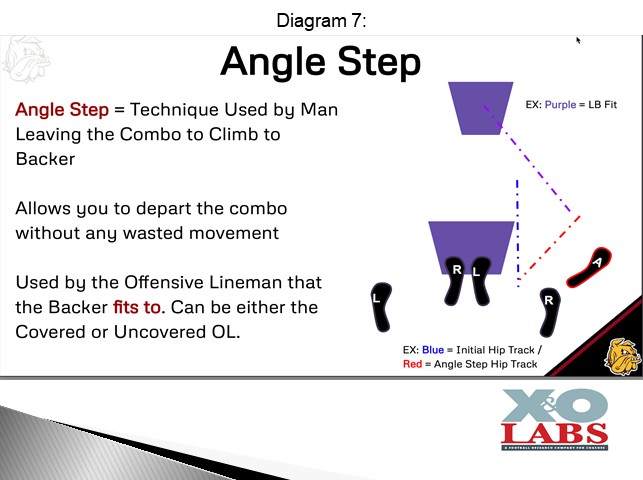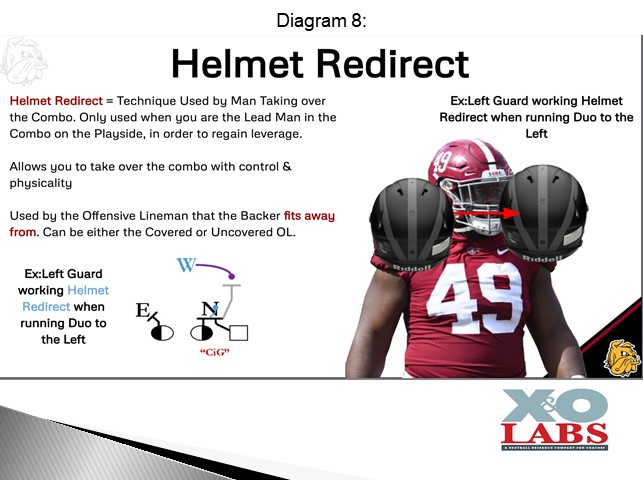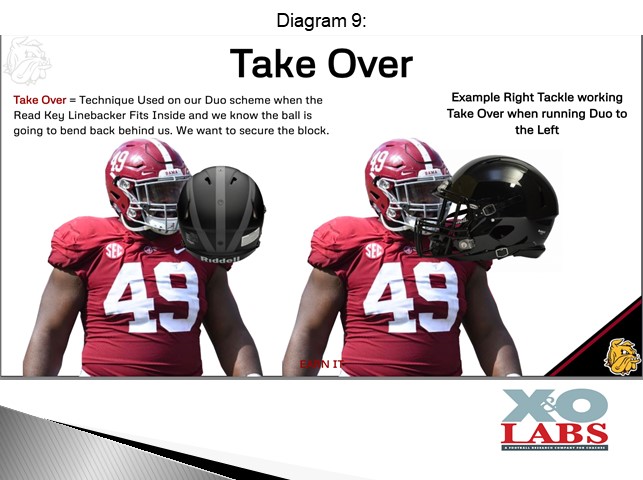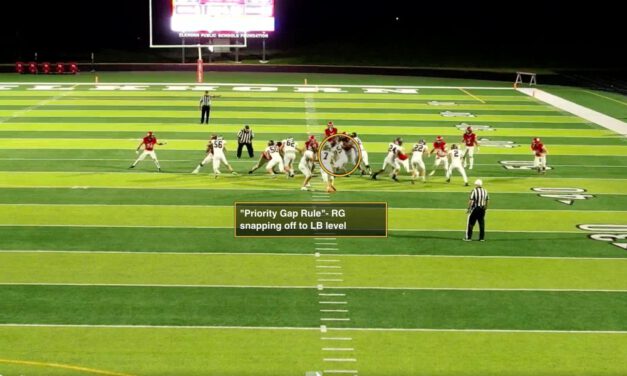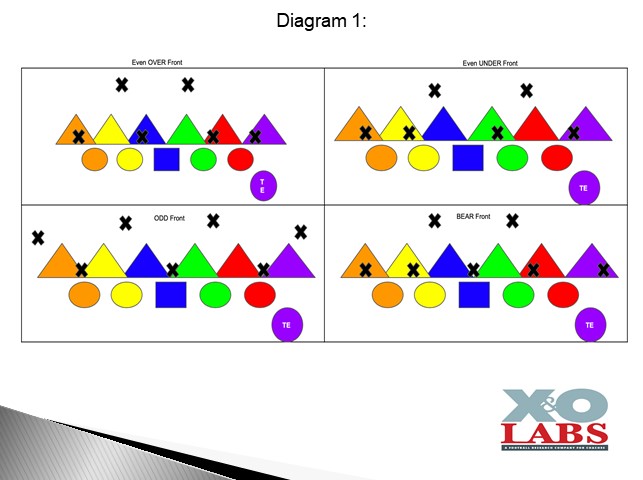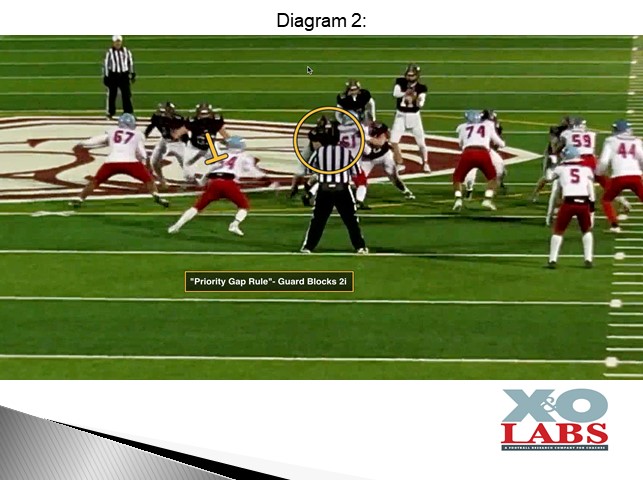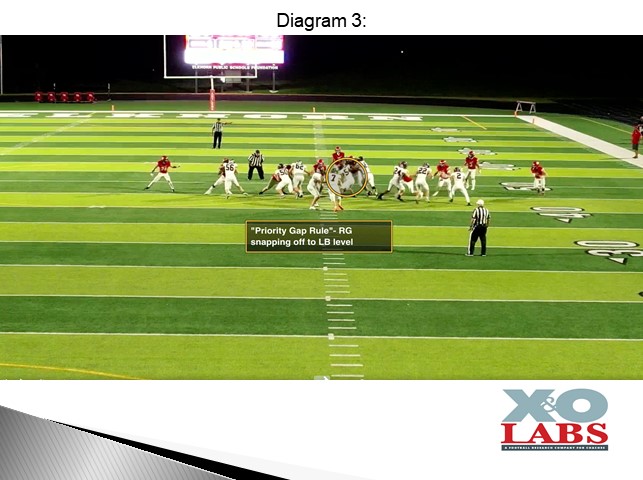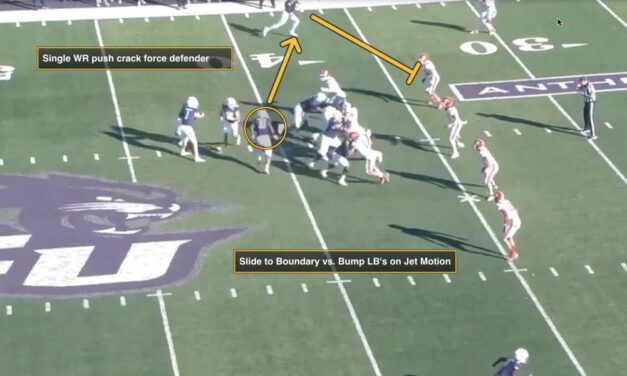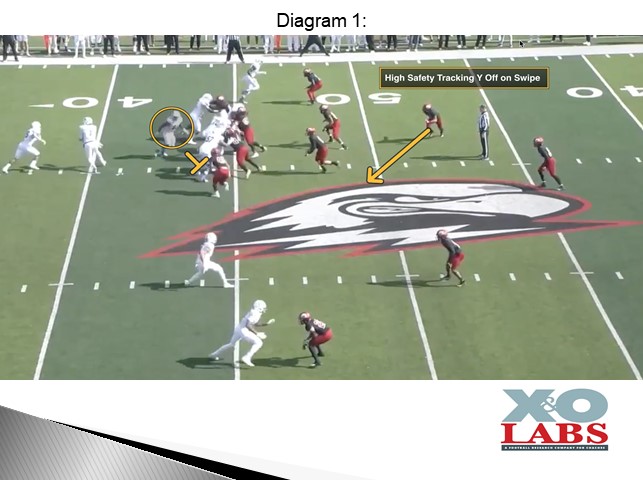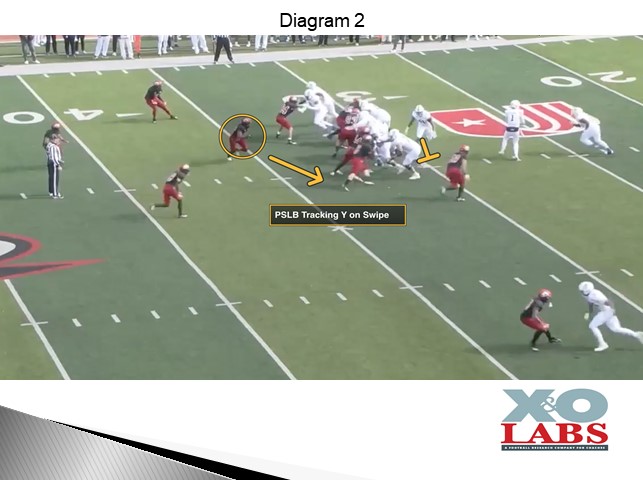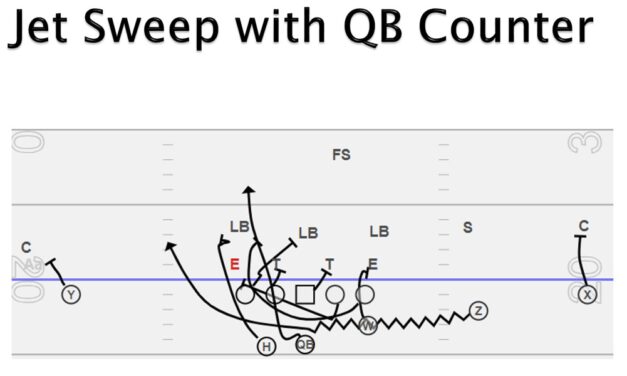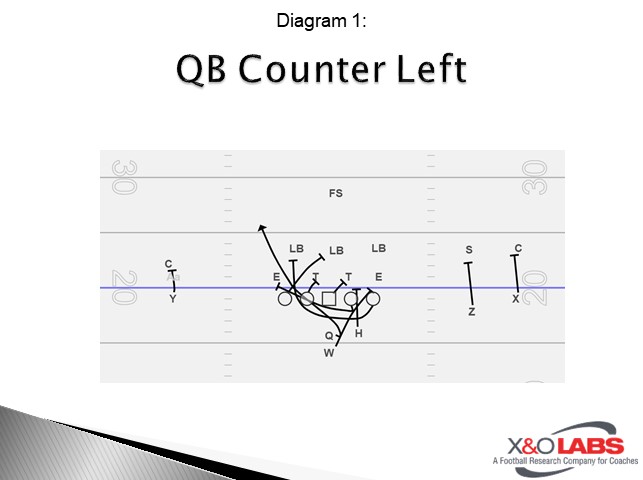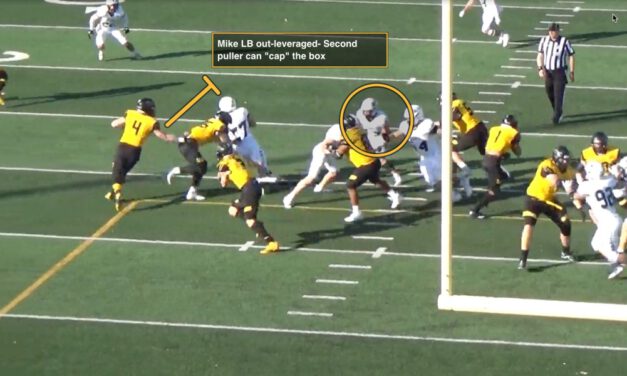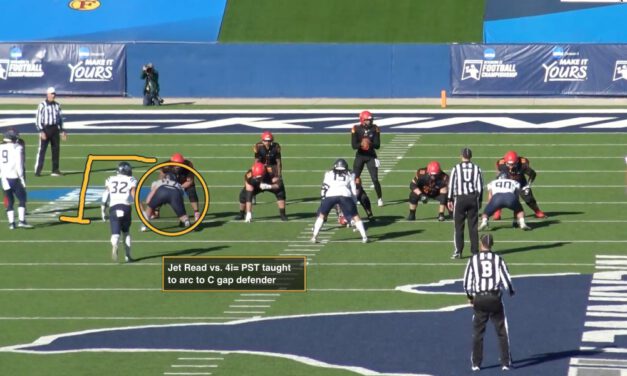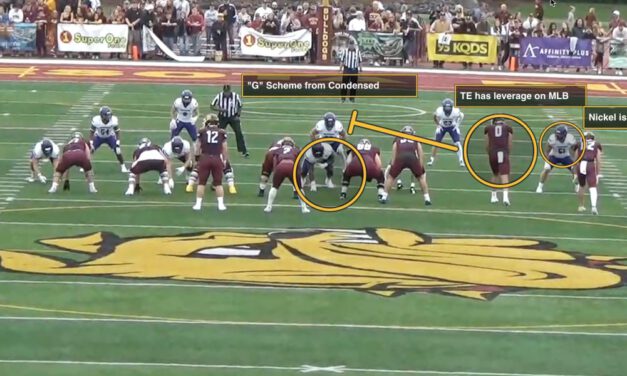Furman’s Loaded Presentation Pressure Menu
By Mike Kuchar with Chad Byers
Co-Defensive Coordinator/Inside Linebackers
Furman University (SC)
Twitter: @CoachC_Byers
This past season, Furman was among the best in the country in defending third down and a big part of its third down menu consisted of presenting overloaded fronts to affect protections in third and long. For co-defensive coordinator Chad Byers, the priority was to get offenses to declare their protections and attack opposite. And if they can’t get an offense to declare protections, well then it becomes a game of picking on your personnel. “Let’s say your left Tackle is a weak spot, now I can overload away from him and I guarantee a one on one where the Guard can’t help him,” said Coach Byers.
All of the following loaded presentation calls are one-word calls and became a safe alternative to being too exotic on third down as Furman was in previous seasons. “We just couldn’t play fast,” said Coach Byers. “This lets us get to a specific game plan mindset and work from a menu of a few different looks. Now we took our five or six base pressures and figured let’s just call a front and use them.”
Furman’s loaded front pressure menu will be the focus of this report. But it’s important to keep in mind that Coach Byers and his staff will alternate between pure four-man rushes and pressure patterns in these presentations. He will pair several four-man games at the line of scrimmage to alter protection schemes and exploit personnel.
“Tab” Front Presentations
The cornerstone of the menu is what Furman calls its “Tab” presentation, which tells the Tackle and Bandit (Boundary End) in Furman’s three-down outfit to align as a 5-technique or wider on the line of scrimmage.

This also tells the weakside (Will) linebacker to be at the heel line of the line of scrimmage to present the illusion that they are bringing three off the edge to get some over-setting. Essentially, this becomes a 3-5-9 surface into the boundary, which is preferably where Coach Byers likes to design his overload.

“We mainly load into the boundary because our front is built with field/boundary personnel and predicated where the 3-technique is,” he said. “It’s more efficient for us to load to that side.” And the initial benefit of the load is that with a zero technique, the Guard has to declare quickly if he is going to help the Center or leave the Center singled up. “ When we build our game plan, we assume most protections will slide to the boundary because that is where our overload is,” he said. “If they are not going to slide to the boundary, then we are bringing a corner pressure or Will pressure. As soon as they slide to the boundary then we are bringing field pressure. There is a point in doing both.”





